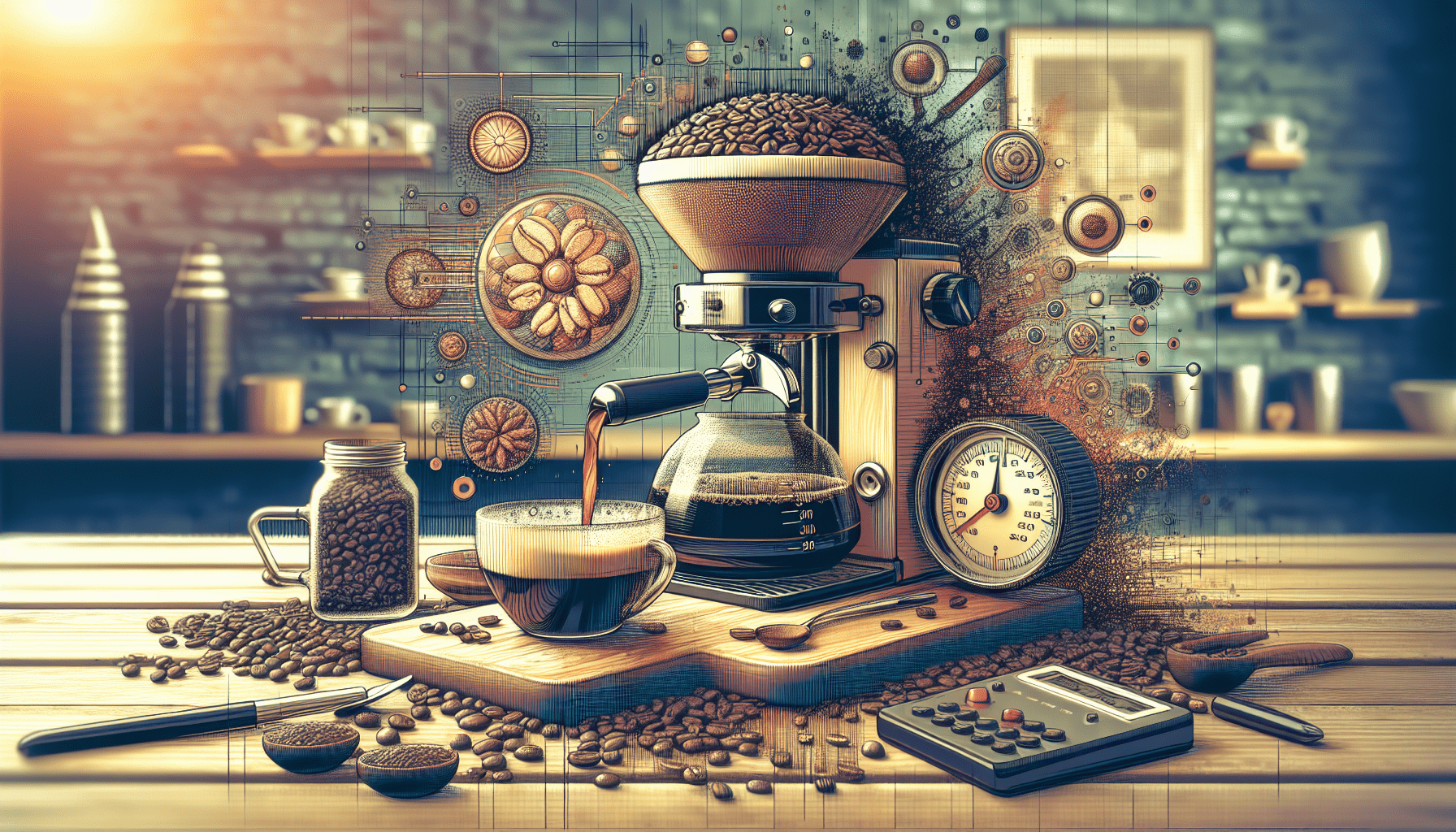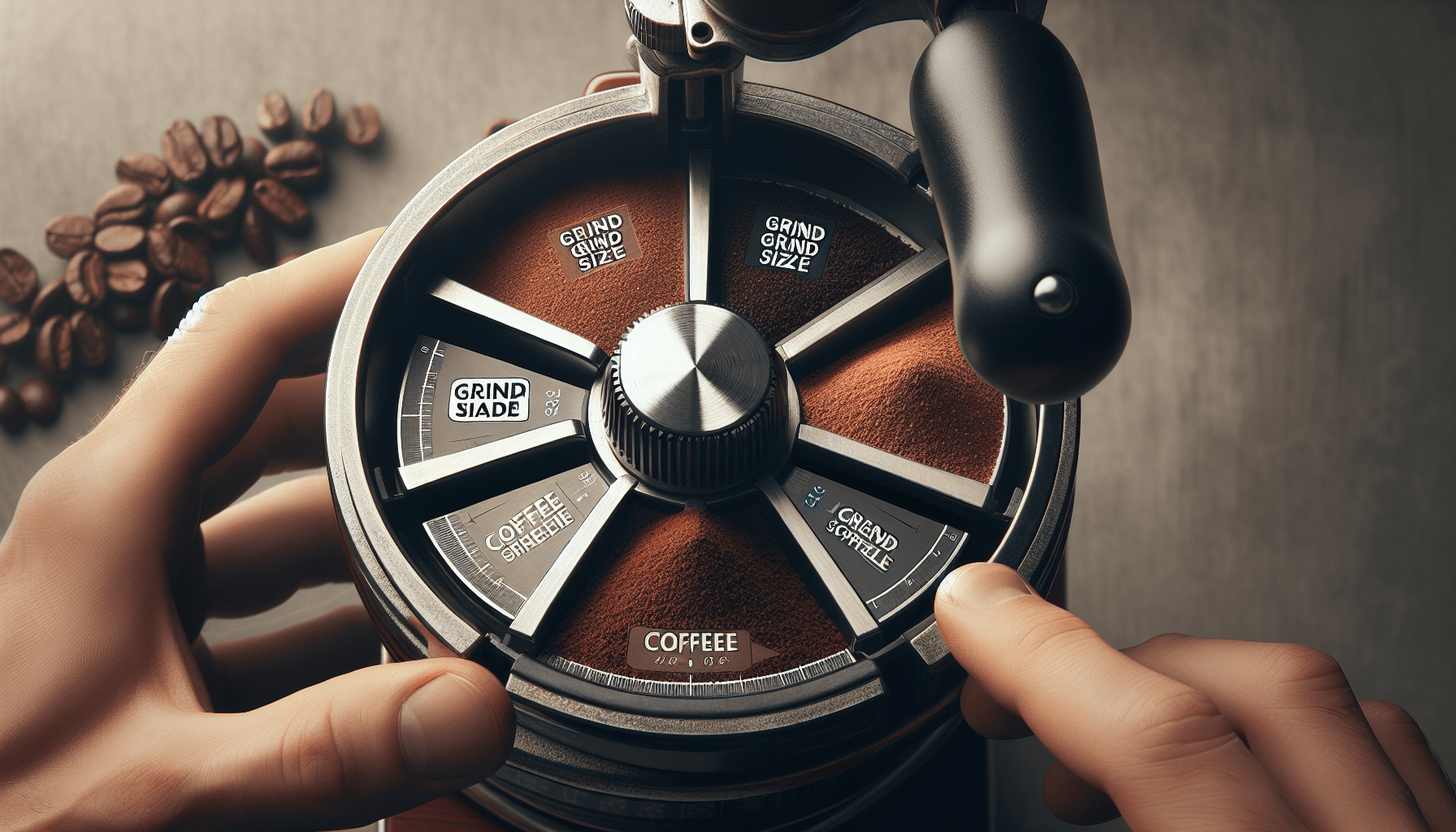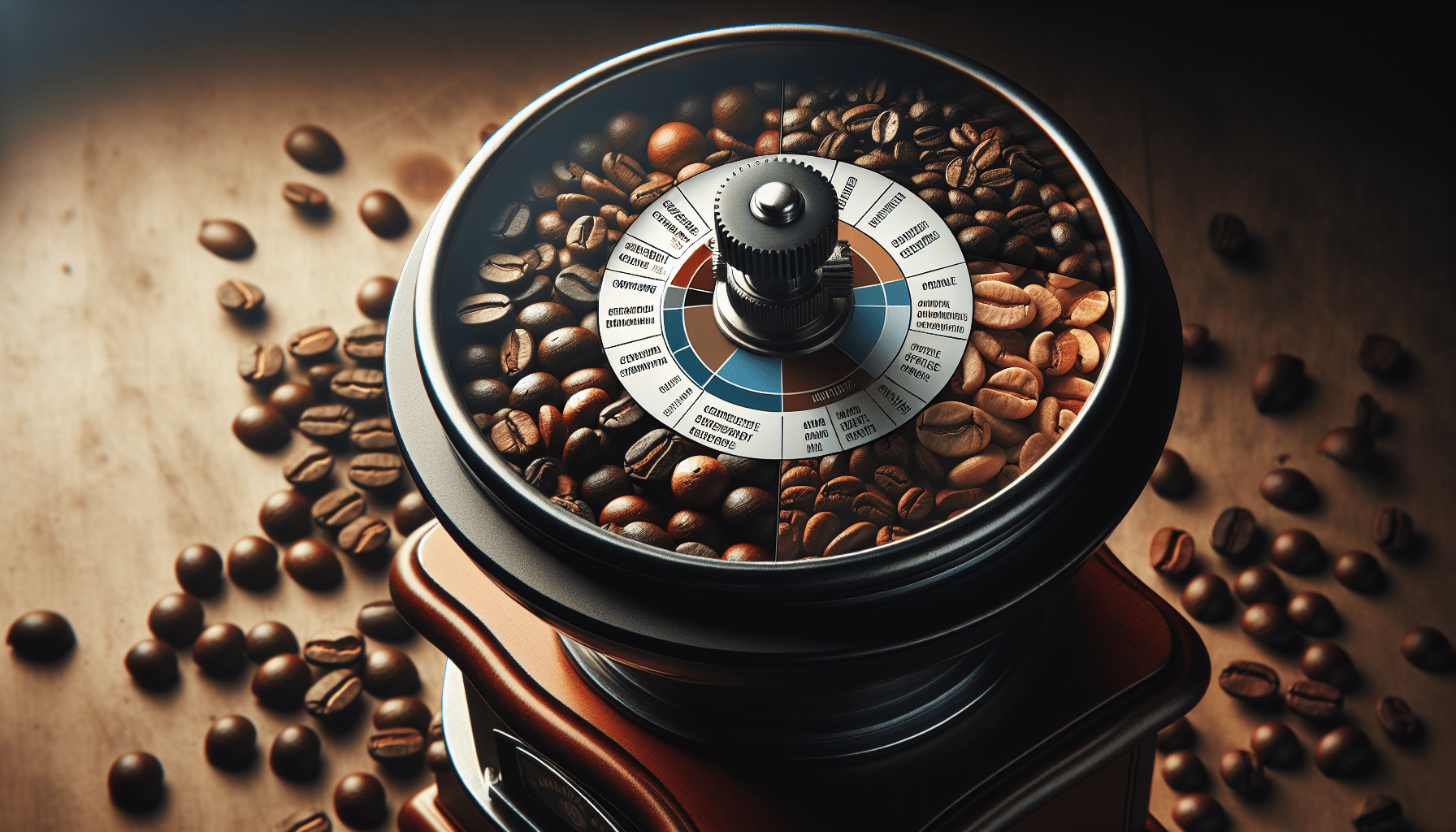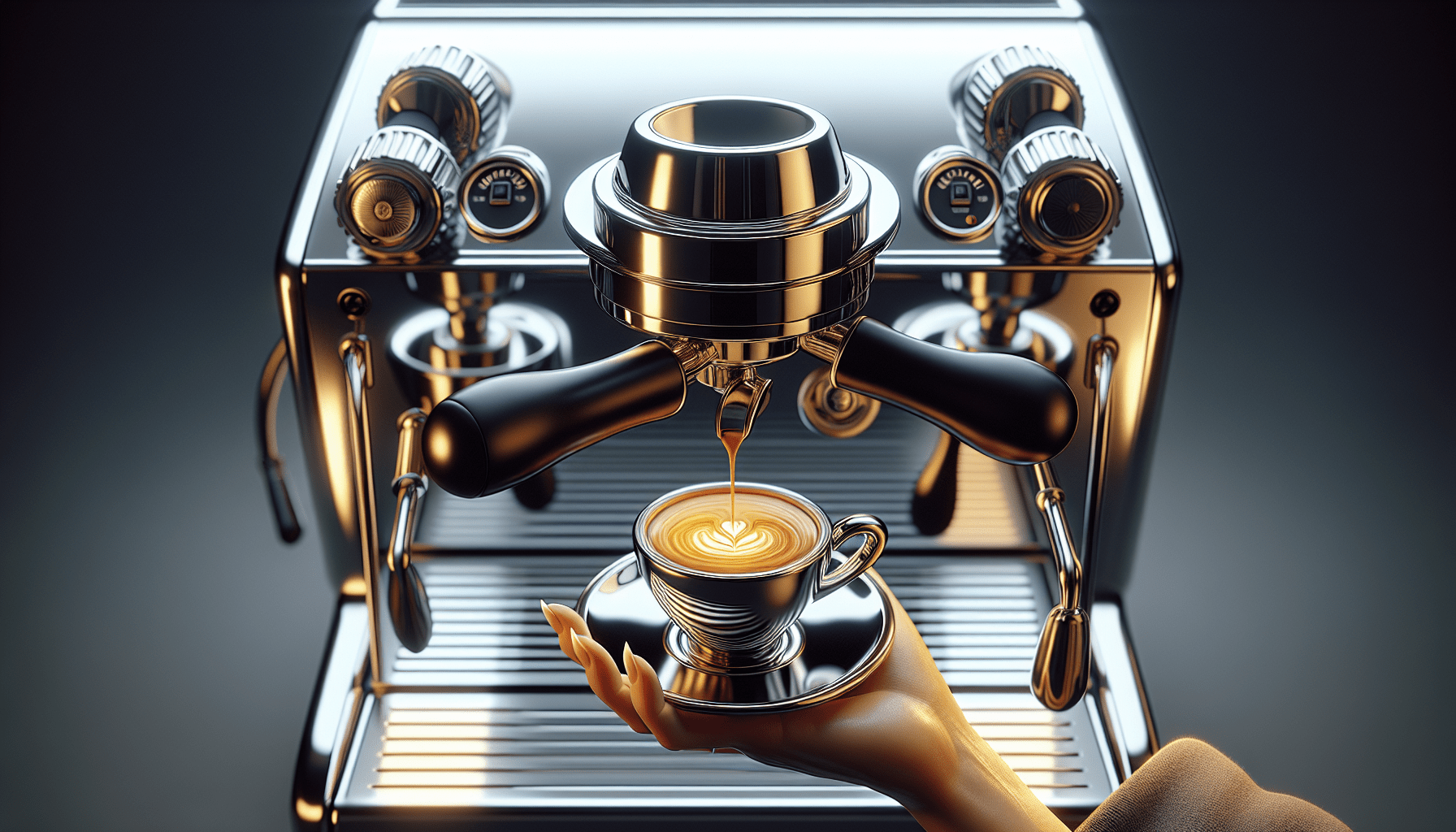You love a good cup of coffee and you’ve experimented with various types of coffee beans. But have you ever wondered if you could adjust the brew temperature to bring out the best flavors in different coffee beans? The answer is yes! By understanding the characteristics of each bean and making some adjustments, you can elevate your coffee brewing game to a whole new level. In this article, we will explore the art of adjusting the brew temperature for different coffee beans, allowing you to indulge in the perfect cup of coffee every time.
Factors Affecting Brew Temperature
When it comes to brewing coffee, the temperature at which the coffee beans are brewed plays a crucial role in determining the flavor and quality of the final cup. Several factors can affect the brew temperature, including the origin of the beans, the roast level, and the variety of the beans.
Bean Origin
The origin of the coffee beans is a significant factor that affects the ideal brew temperature. Different regions around the world have different growing conditions and climates, which influence the flavor compounds present in the beans. For example, beans from Central and South America generally have a milder flavor profile and may require slightly lower brew temperatures to bring out their desired flavors. On the other hand, beans from Africa and the Middle East tend to have more complex and intense flavors, often requiring higher brew temperatures to achieve the desired extraction.
Bean Roast Level
The roast level of the coffee beans also impacts the ideal brew temperature. Lightly roasted beans, which retain more of their natural acidity and flavors, generally require a lower brew temperature to prevent over-extraction and preserve their delicate characteristics. Medium roasted beans strike a balance between acidity and sweetness, often requiring a moderate brew temperature. Dark roasted beans, which have a more pronounced bitterness and lower acidity, can withstand higher brew temperatures to extract the desired flavors effectively.
Bean Variety
Different coffee bean varieties, such as Arabica and Robusta, can also influence the ideal brew temperature. Arabica beans, known for their delicate and nuanced flavors, often benefit from a lower brew temperature to preserve their subtleties. Robusta beans, on the other hand, are generally stronger and more bitter, often requiring a slightly higher brew temperature to extract their full-bodied flavors. It is essential to consider the specific characteristics of the bean variety you’re working with when adjusting the brew temperature.
Ideal Brew Temperature for Different Coffee Beans
To achieve the best possible flavor and extraction from your coffee beans, it is crucial to understand the ideal brew temperature for each type of roast. Here are the recommended brew temperatures for different coffee bean roasts:
Light Roast
Lightly roasted coffee beans are typically brewed at a temperature range of 190-205°F (88-96°C). The lower end of the range is ideal for beans with delicate flavors and higher acidity, while the higher end is more suitable for beans with a fuller body and balanced acidity.
Medium Roast
Medium roasted beans are best brewed at a temperature range of 200-210°F (93-99°C). This temperature range helps to balance the acidity and sweetness of the coffee, allowing for a well-rounded and flavorful cup.
Dark Roast
Dark roasted beans can withstand higher brew temperatures, typically ranging from 205-215°F (96-102°C). The higher temperature helps to extract the rich, bold flavors and aromas characteristic of dark roast coffee, while also minimizing any lingering bitterness.
Adjusting Brew Temperature for Different Beans
Now that you understand the factors and ideal brew temperatures for different coffee beans, let’s explore how you can adjust the brew temperature to suit your specific beans and preferences.
Experimentation
One of the best ways to find the perfect brew temperature for your beans is through experimentation. Start with the recommended temperature range for your bean type and gradually adjust the temperature within that range until you find the sweet spot that highlights the desired flavors and balances the acidity. Keep track of your adjustments and the resulting flavor profiles to determine the ideal brew temperature for future brews.
Using a Thermometer
For precise control over the brew temperature, using a thermometer can be extremely helpful. Invest in a high-quality digital thermometer with a long probe that can be inserted into the brewing water without interfering with the brewing process. This will allow you to accurately monitor the temperature throughout the brewing process and make any necessary adjustments.
Time as a Temperature Indicator
If you don’t have a thermometer available, you can still use time as a rough indicator of the brew temperature. Start by bringing your water to a boil, then let it sit off the heat for a certain amount of time before beginning to brew. This method allows the water to cool slightly, giving you a moderately accurate estimation of the brew temperature. Keep in mind that the time required to achieve the desired temperature will vary depending on factors like air temperature and altitude.
Tips for Adjusting Brew Temperature
While adjusting the brew temperature can be a nuanced process, here are some general tips to keep in mind:
Start with Recommended Temperature
Always start with the recommended brew temperature range for your specific bean type and roast level. This will serve as a baseline for your adjustments and help ensure that you are within the appropriate temperature range to achieve optimal extraction.
Gradually Modify Temperature
When making adjustments to the brew temperature, do so gradually. Changes of just a few degrees can significantly affect the flavor profile of your coffee, so it’s essential to make small adjustments and taste the results before making further changes.
Document Brewing Results
Keeping a record of your brewing process and the results will help you fine-tune your brew temperature over time. Note down the temperature, bean origin, roast level, brewing method, and other variables, as well as any observations about the flavor profile. This documentation will guide you in making more informed adjustments in the future.
Common Mistakes in Adjusting Brew Temperature
While adjusting the brew temperature can enhance your coffee brewing experience, it’s important to avoid common mistakes that can negatively impact the final cup. Here are a few common pitfalls to watch out for:
Overheating the Water
Heating the water way beyond the recommended temperature range can lead to an over-extracted and bitter brew. It’s essential to stay within the suggested temperature range to ensure optimal extraction without damaging the flavors.
Failing to Monitor Temperature
Neglecting to monitor the brew temperature throughout the brewing process can result in inconsistent and unpredictable results. Using a thermometer or other temperature control methods will help you maintain the desired temperature and produce a more consistent brew.
Ignoring Personal Preference
While there are general guidelines for brew temperatures, it’s important to remember that personal preference plays a significant role in determining the ideal temperature for your cup of coffee. Don’t be afraid to experiment and adjust the temperature according to your taste preferences to produce a coffee that suits your individual palate.
Alternative Brewing Methods and Their Temperature Control
Different brewing methods require different approaches to temperature control. Here are a few popular alternative brewing methods and their temperature considerations:
Cold Brew
Cold brew coffee relies on steeping coarsely ground coffee in cold water over an extended period, typically 12-24 hours. In cold brew, temperature control is less critical, as the brew time compensates for the lower temperature. The ideal water temperature for cold brew is typically room temperature or slightly colder, around 75-80°F (24-27°C).
Pour Over
Pour over coffee brewing involves manually pouring hot water over a bed of coffee grounds in a dripper. To achieve optimal results in pour over brewing, start by heating your water to the appropriate temperature, typically within the recommended temperature range for your bean type. By pouring the hot water in slow, controlled pours, you can maintain a consistent brew temperature throughout the process.
French Press
French press brewing entails steeping coffee grounds in hot water and then pressing them to separate the liquid from the grounds. In this method, the water should be heated to the recommended brew temperature before pouring it over the grounds. Since the coffee and water remain in contact for an extended period, it’s essential to consider the brew temperature to avoid over-extraction.
Understanding Coffee Extraction
To fully comprehend the significance of brew temperature in coffee brewing, it’s essential to understand the concept of coffee extraction. Coffee extraction refers to the process by which hot water dissolves the soluble compounds in coffee grounds, extracting the desired flavors and aroma.
Extraction Rate
The extraction rate is the speed at which the soluble compounds are extracted from the coffee grounds. It is influenced by the brew temperature, brew time, grind size, and other factors. Achieving an optimal extraction rate is crucial to strike the right balance between the desirable flavors, acidity, and bitterness in the final cup.
Under-extraction
Under-extraction occurs when the brew temperature, brew time, or other factors do not extract enough of the coffee’s soluble compounds. This results in a weak and sour cup with an underdeveloped flavor profile. Adjusting the brew temperature upward can help mitigate under-extraction and enhance the coffee’s overall flavor.
Over-extraction
Over-extraction happens when the brew temperature, brew time, or other factors extract too much of the coffee’s soluble compounds. This leads to a bitter and astringent cup with an overpowering flavor profile. Lowering the brew temperature can help prevent over-extraction and produce a more balanced and enjoyable cup of coffee.
Flavor Profile and Brew Temperature
The brew temperature has a profound impact on the flavor profile of coffee. Here’s how the temperature affects some key flavor elements:
Acidity
Higher brew temperatures tend to highlight the acidity in coffee, resulting in brighter and more vibrant flavors. Lower brew temperatures, on the other hand, can subdue the acidity and bring out the coffee’s more delicate and nuanced characteristics.
Bitterness
Brewing coffee at higher temperatures can extract more bitter compounds, resulting in a stronger and more pronounced bitterness. Lowering the brew temperature can help lessen the bitterness and create a smoother and more balanced cup.
Sweetness
Finding the right brew temperature can enhance the sweetness in coffee. By adjusting the temperature, you can optimize the extraction of sugars, leading to a sweeter and more enjoyable flavor profile.
Special Considerations for Single Origin and Specialty Coffee
When brewing single origin and specialty coffees, it’s important to consider additional factors that may impact the brew temperature.
Temperature Adjustments for Specific Regions
Coffee beans from different regions may require specific temperature adjustments to bring out their unique qualities fully. For example, beans from high-altitude regions may need slightly higher brew temperatures to compensate for the cooler climate and slower extraction. Conversely, beans from lower-altitude regions may benefit from slightly lower brew temperatures to avoid over-extraction.
Factors to Consider in Specialty Coffee
Specialty coffees are known for their exceptional quality and unique flavor profiles. When working with specialty beans, it’s essential to consider the specific recommendations provided by the roaster or producer. These recommendations often include suggestions for the ideal brew temperature to maximize the coffee’s potential and showcase its distinct character.
Conclusion
Brew temperature plays a vital role in the coffee brewing process, influencing the flavor, acidity, bitterness, and overall quality of the final cup. By understanding the factors that affect the brew temperature and following some tips for adjustment, you can fine-tune your brewing technique to achieve the best possible flavor extraction from your coffee beans. Remember to experiment, document your results, and explore the diverse world of coffee to discover your personal preferences and perfect brew temperature.




